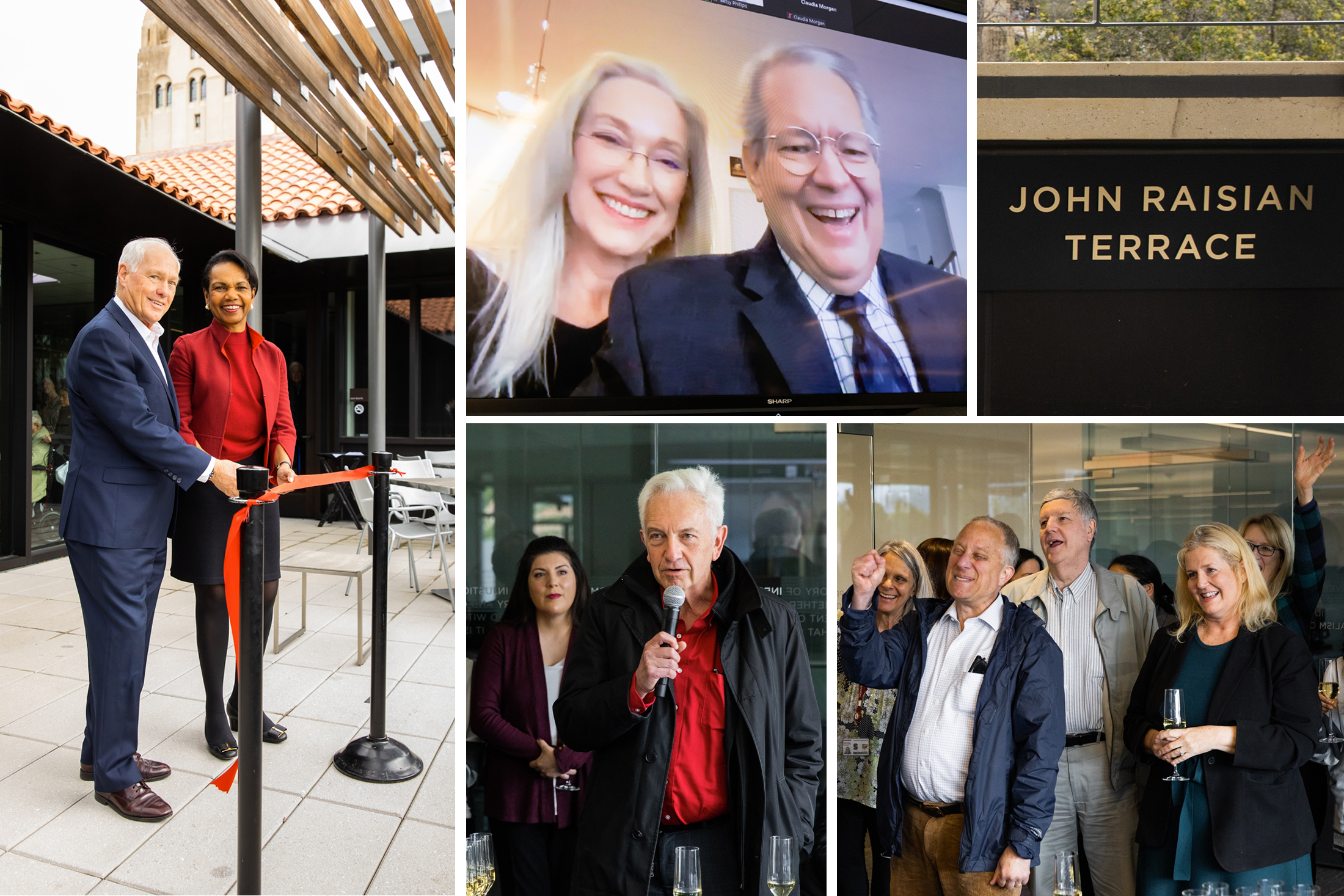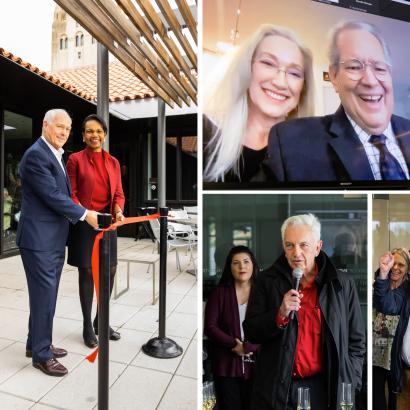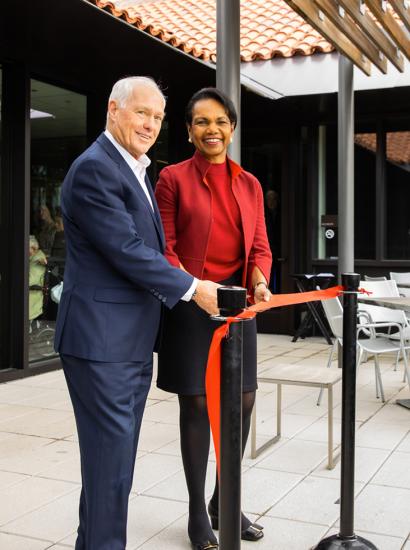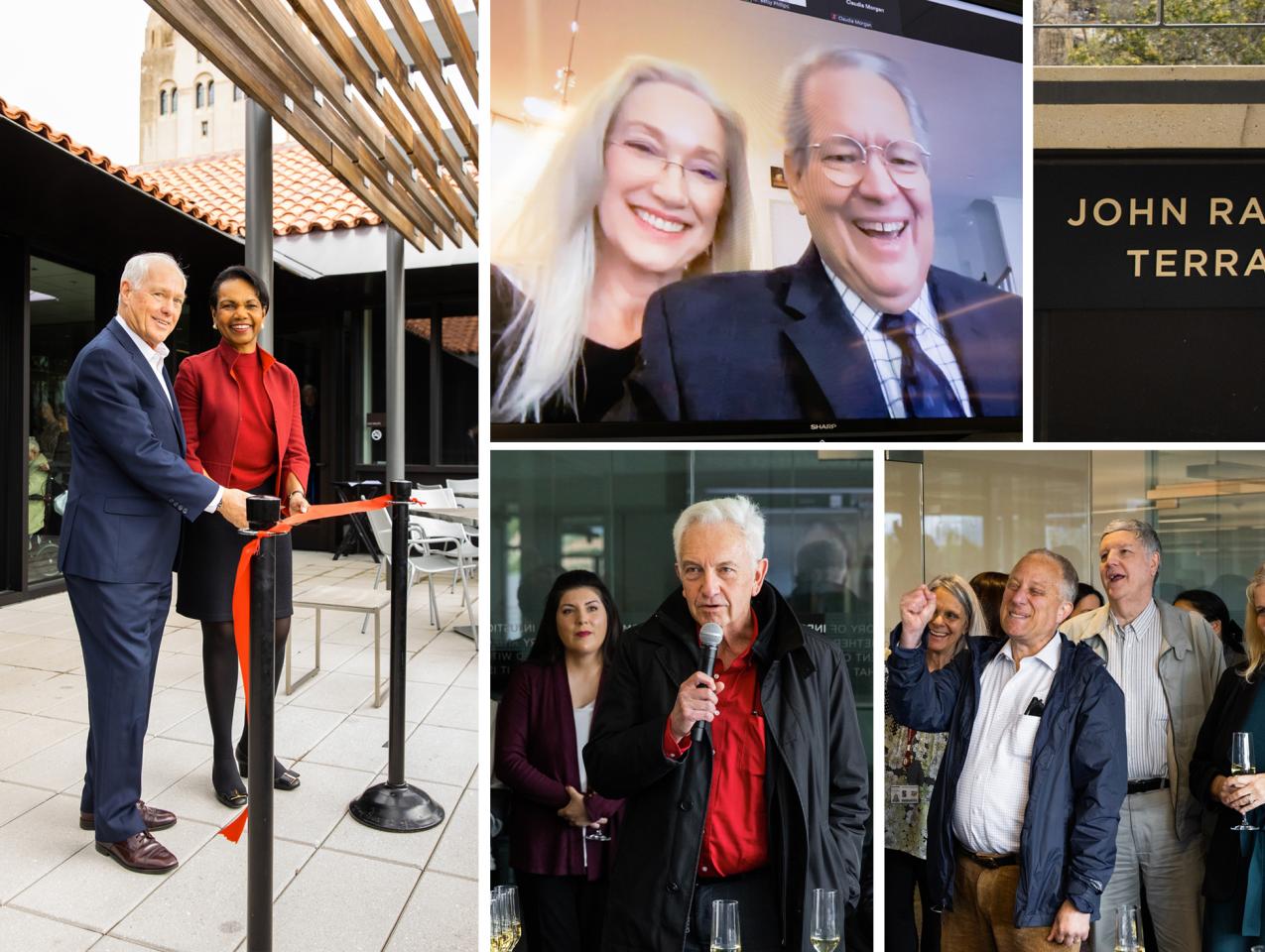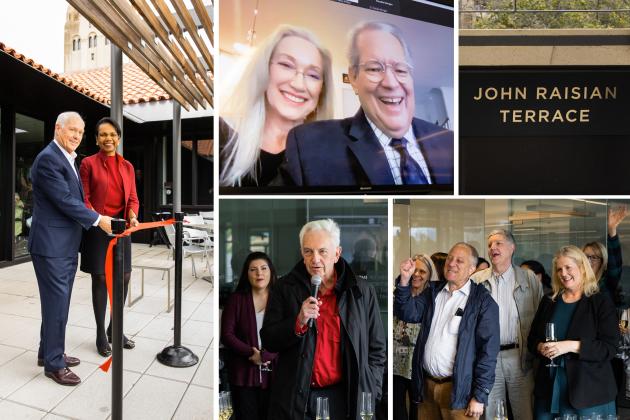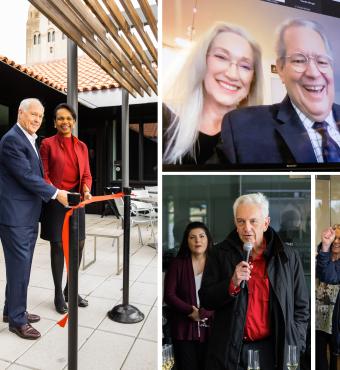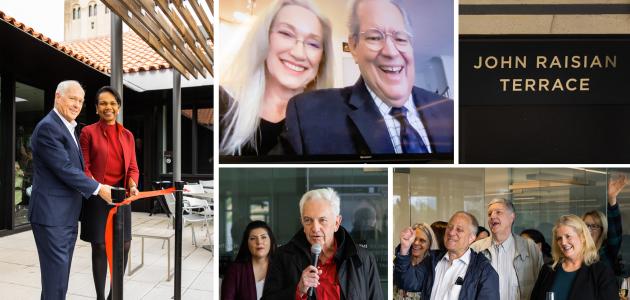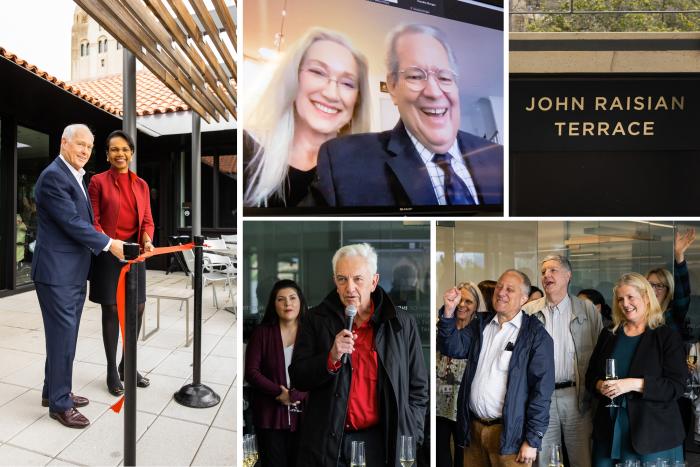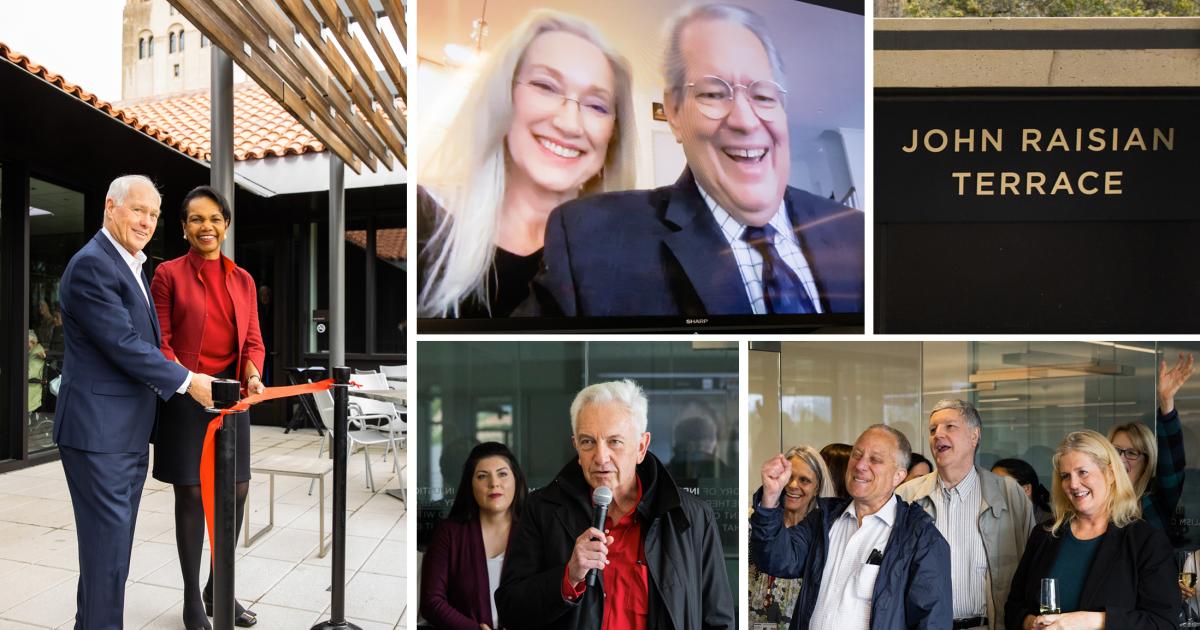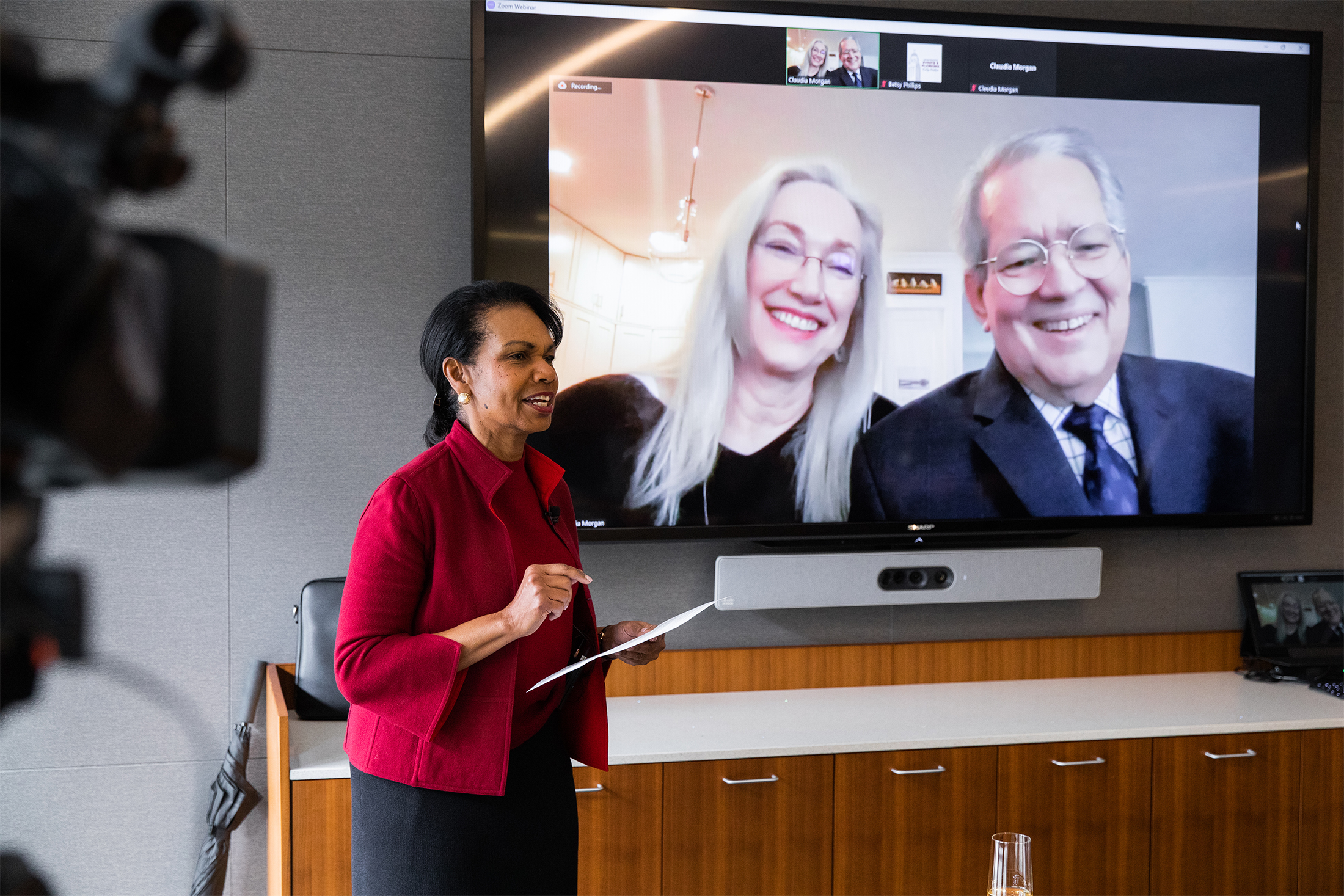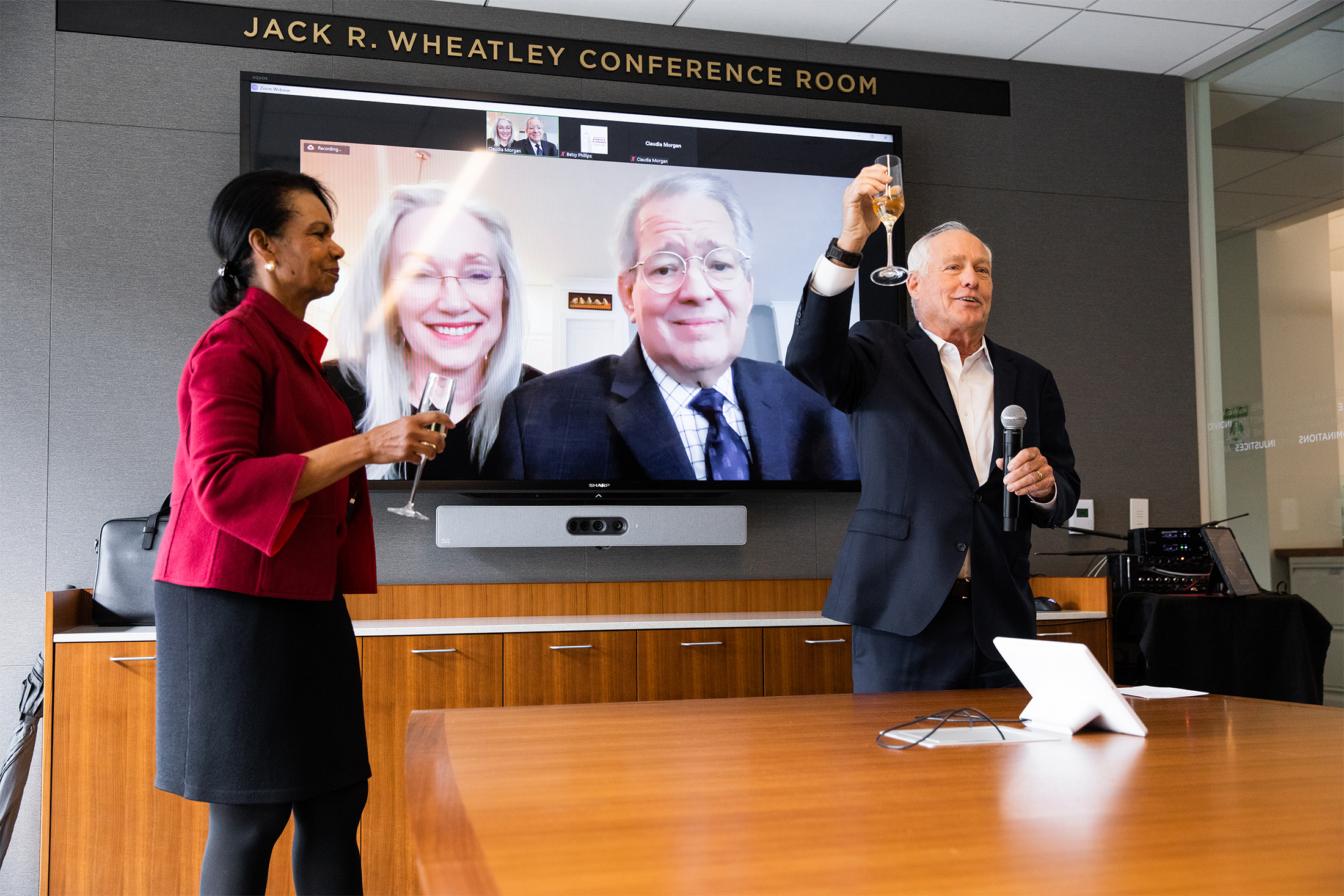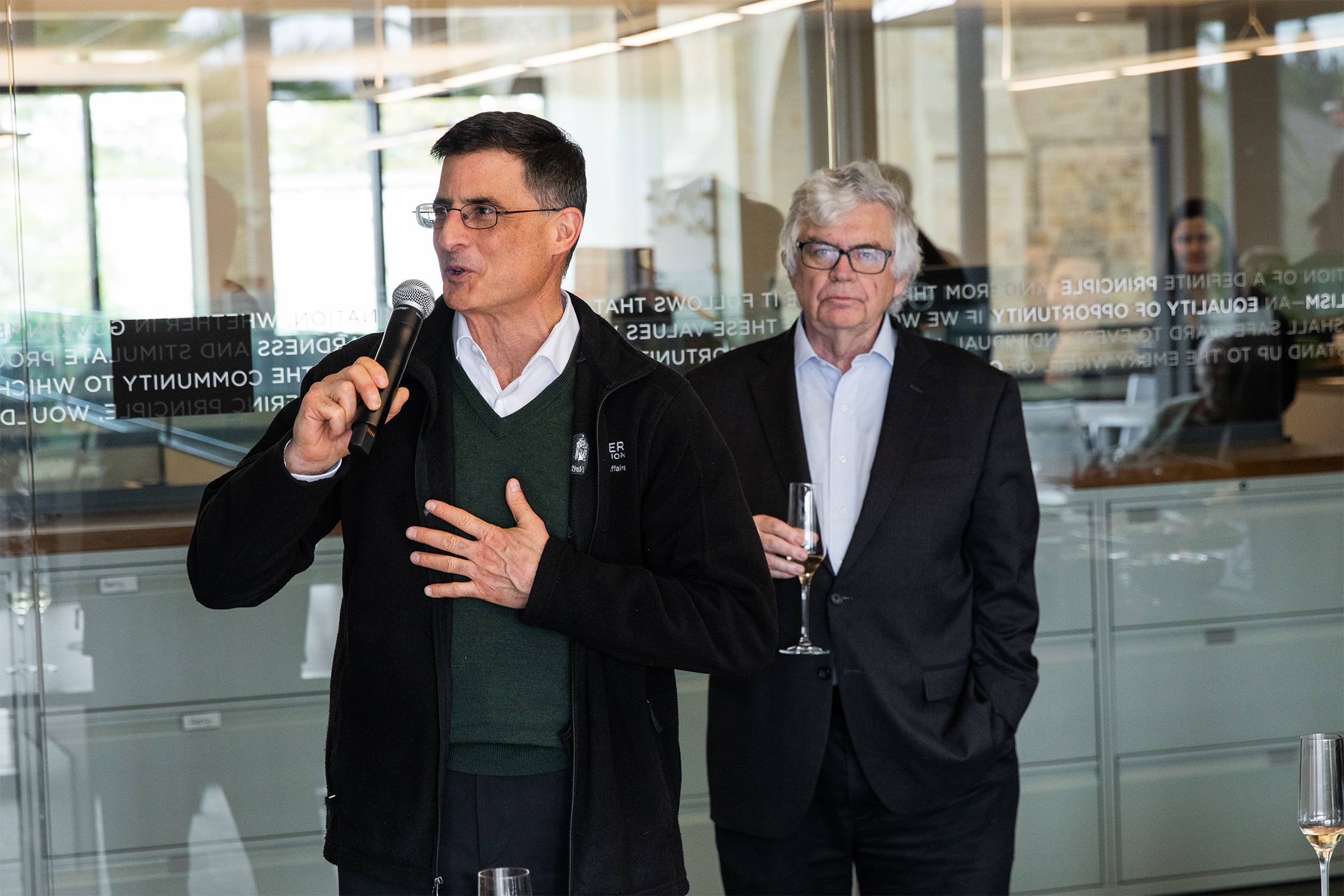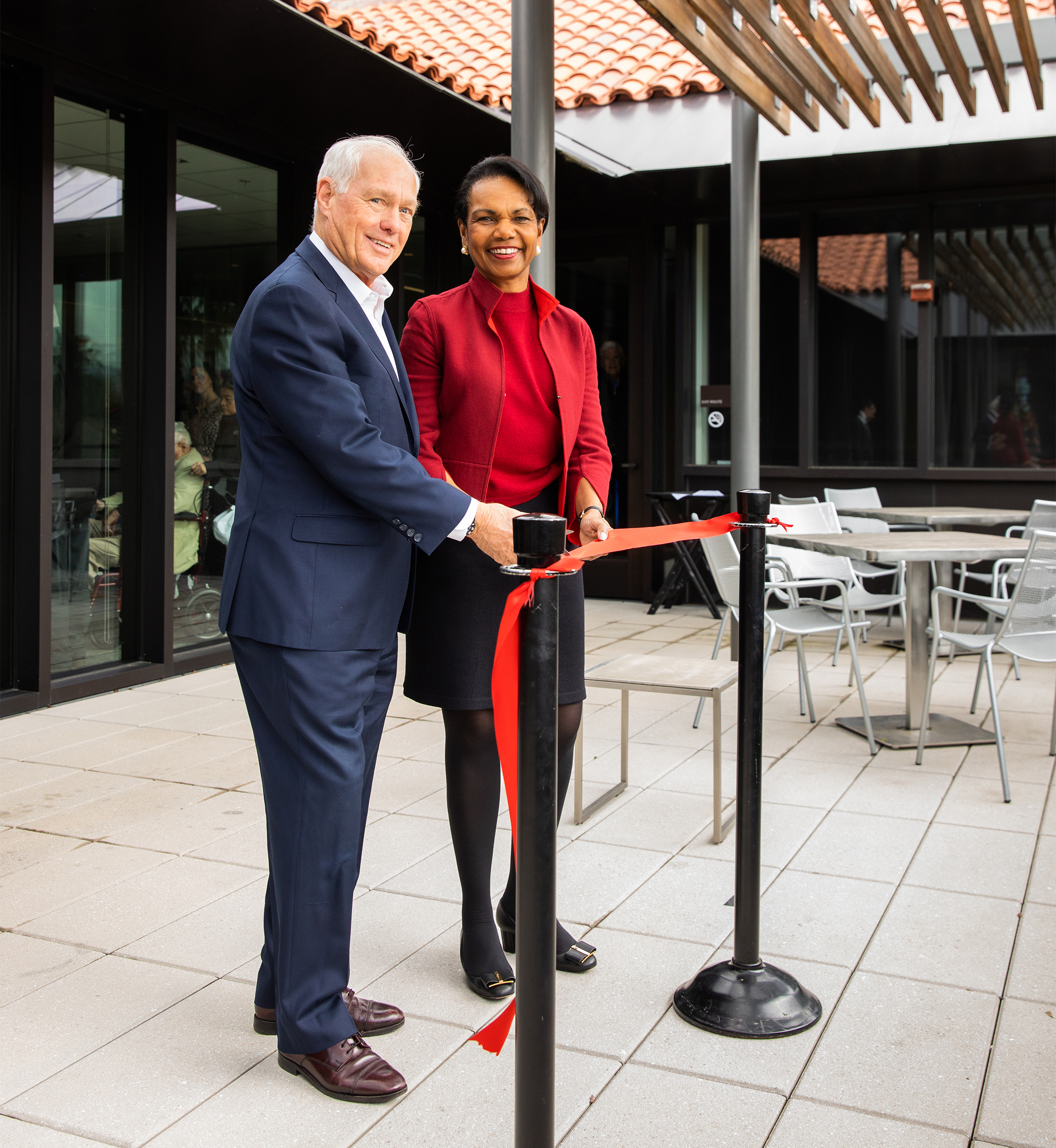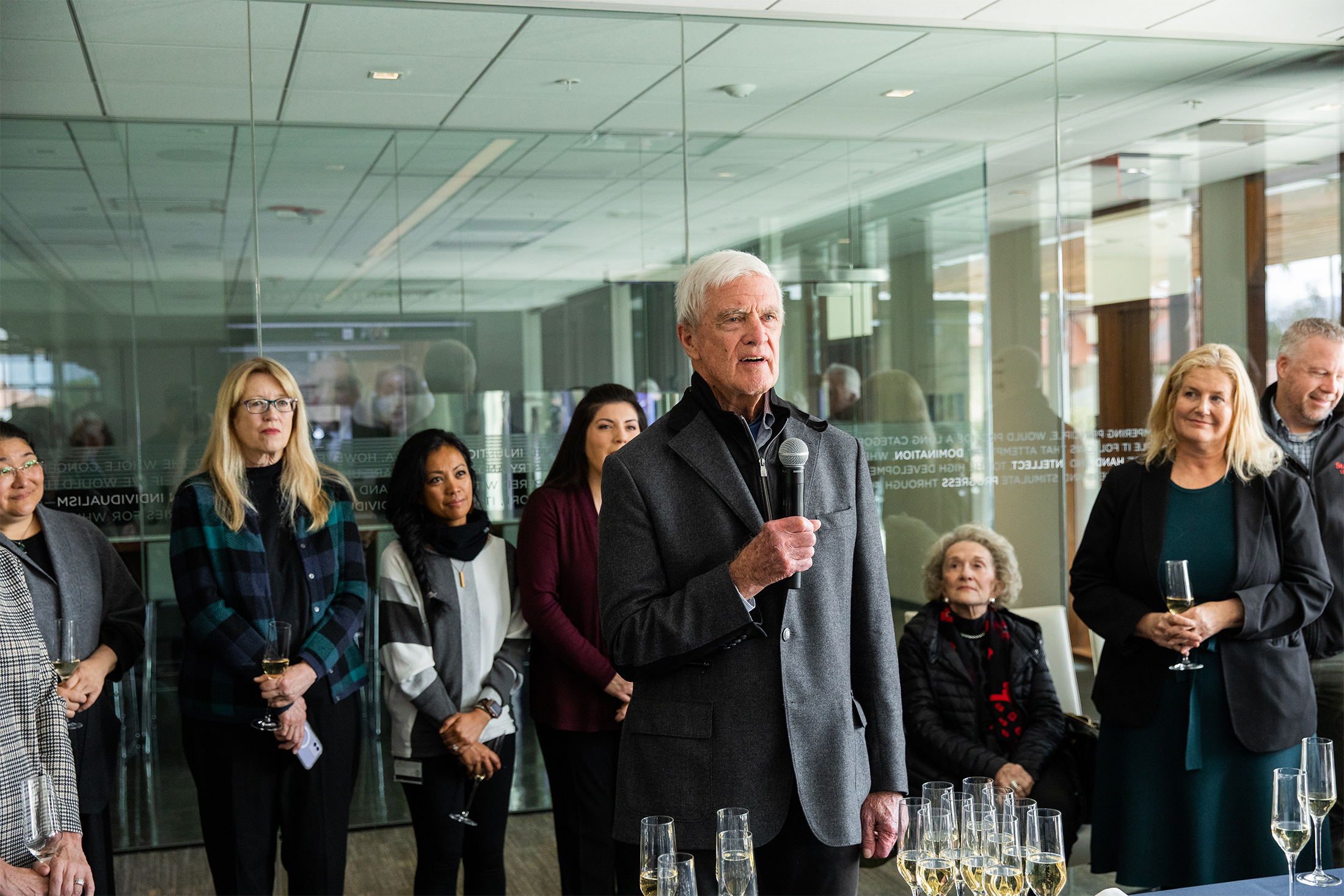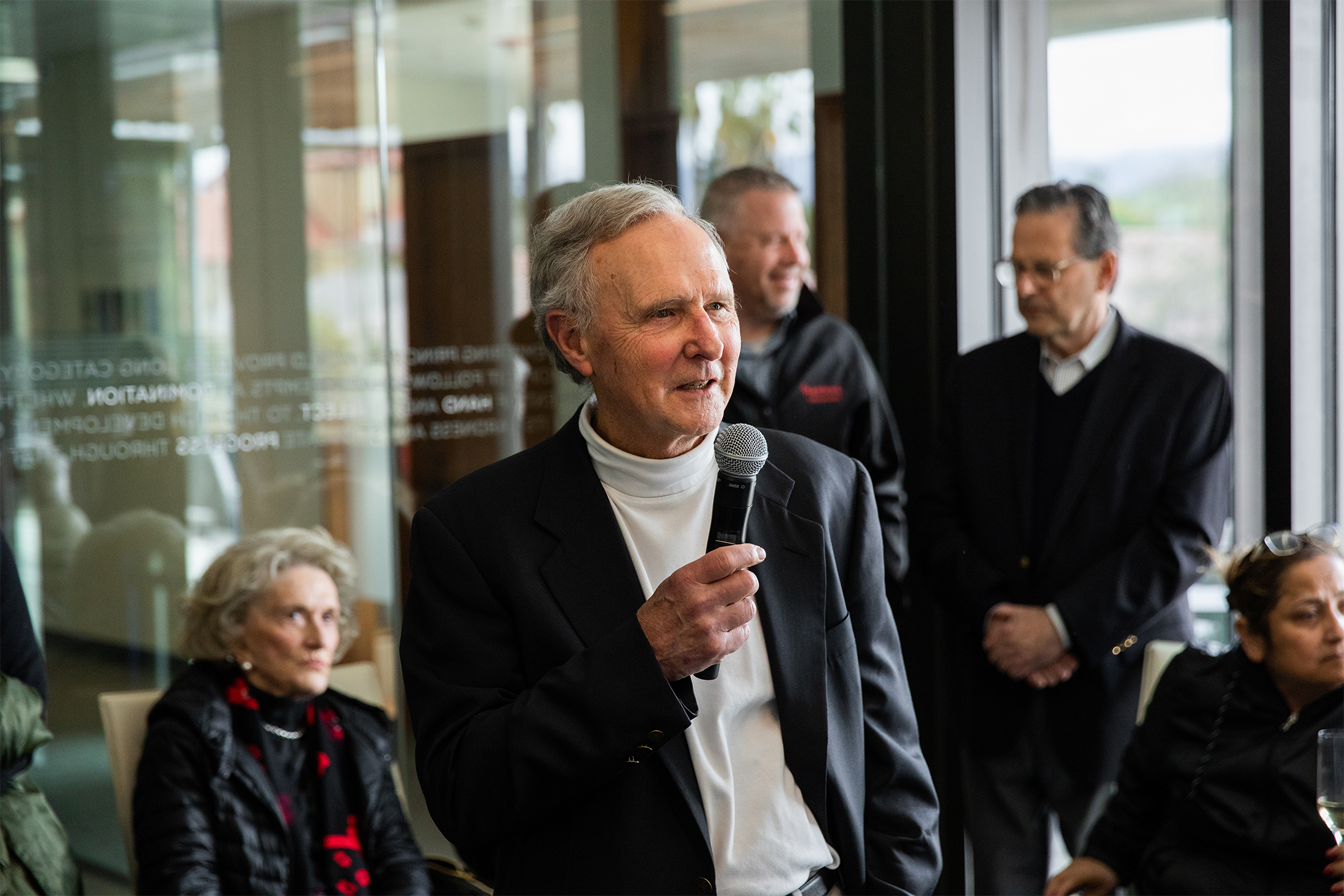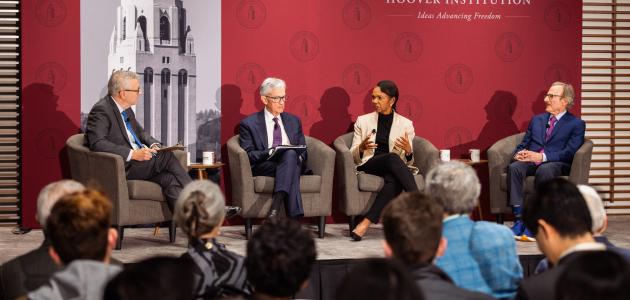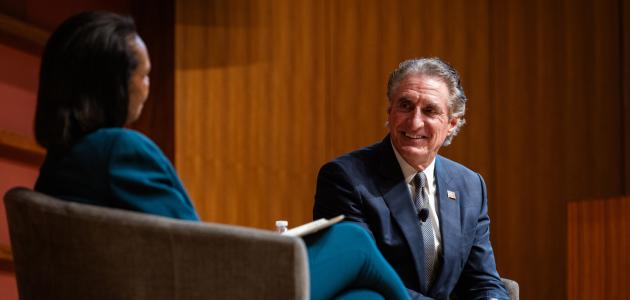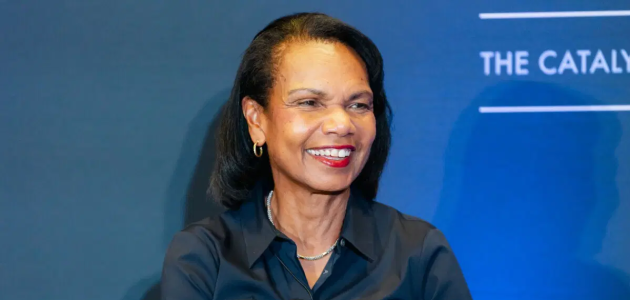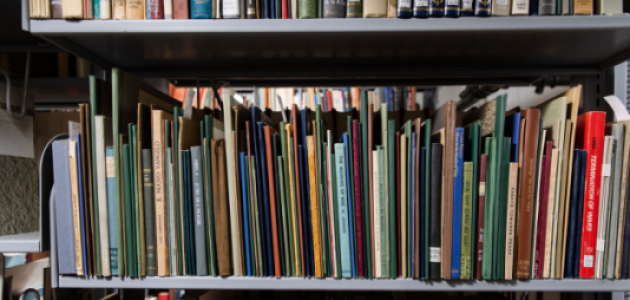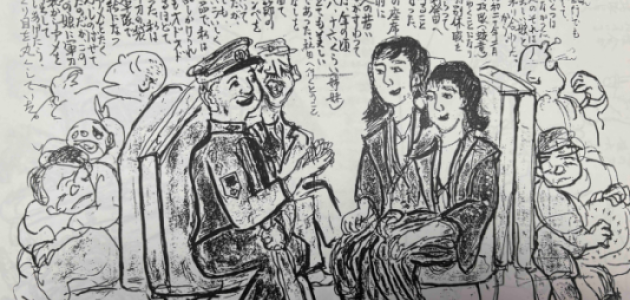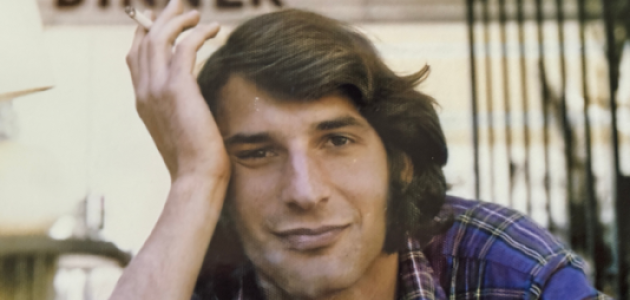Hoover Institution (Stanford, CA) – The David and Joan Traitel Building’s south terrace has been dedicated in honor of John Raisian, who served as director of the Hoover Institution for over twenty-five years, from 1990 until his retirement in 2015.
Current Hoover Institution director Condoleezza Rice presided over the ribbon-cutting ceremony that included Raisian’s family, friends, and colleagues. Raisian and his wife, Claudia Morgan, participated in the program virtually.
Rice paid tribute to Raisian’s service in leadership of Hoover. She said that Raisian embodied what Herbert Hoover, the founder of the Institution, valued most, putting ideas into action for the betterment of mankind. Rice also described how, from her perspective as Stanford University provost in the 1990s, Raisian strengthened the relationship between Hoover and Stanford to the benefit of both.
Prior to the ribbon cutting, John F. Cogan, Leonard and Shirley Ely Senior Fellow, gave a toast to Raisian, recalling their close friendship over the past half-century and their shared career experiences. Raisian and Cogan first became acquainted while both were graduate students in economics at the University of California–Los Angeles. They worked together at the RAND Corporation and then in the Reagan administration’s Labor Department before Raisian joined Cogan at the Hoover Institution in the mid-1980s.
Cogan said that it was fitting that Traitel’s south terrace be named for Raisian. It was Raisian’s vision, strategic thinking, and creativity that made the building’s opening in 2017 a reality. According to Cogan, Raisian, understanding the need for Hoover to expand its office and conference spaces, was faced with a challenge. There was no space available near the existing Hoover buildings. Encina Hall was on one side and Cummings Art Building was on the other side.
Raisian identified a solution and found a way to achieve it. He worked out a plan in which Hoover would help fund a new Art Department building at another location on the Stanford campus. This freed up land adjacent to the other Hoover buildings upon which the Traitel building was constructed.
According to Cogan, Raisian recognized that important policy ideas ultimately come from great research. So, the core of Hoover had to be scholarship devoted to addressing societal problems. Hoover’s success would be determined by the work of its fellows. To this end, Raisian expanded the Hoover fellowship and created an environment in which scholars were free to pursue their scholarship without the usual academic administrative burdens.
Cogan also described Raisian’s visionary leadership in building the infrastructure that expanded the reach and influence of research generated by fellows in the public arena. In this effort, Raisian established a public affairs and media relations operation, a strategic communications and marketing team, and support staff for the fellowship.
The characteristic of Raisian that Cogan said stands out the most to him is empathy. “John has this uncanny ability to understand what motivates individuals, what their concerns are, and what their needs are.” Cogan added, “it is key, I think, to his great leadership.”
Cogan concluded his remarks with a toast that invoked Herbert Hoover’s own words.
“Hoover said, ‘the great human advances have not been brought about by mediocre men and women. They were brought about by distinctly uncommon men and women with vital sparks of leadership,’” Cogan stated. “I am sure that if Herbert Hoover were around today, he would be joining us in saluting John Raisian, an uncommon man.”







